Rond de jambe means “Round of the leg, ” a circular leg movement. Ronds de jambe are used as an exercise at the bar, in the centre and the adage, and you can do it a terre or en l’air. When used as a step, ronds de jambe are done en l’air and may be sauté or relevé. All are clockwise (en dehors) and counterclockwise (en dedans).
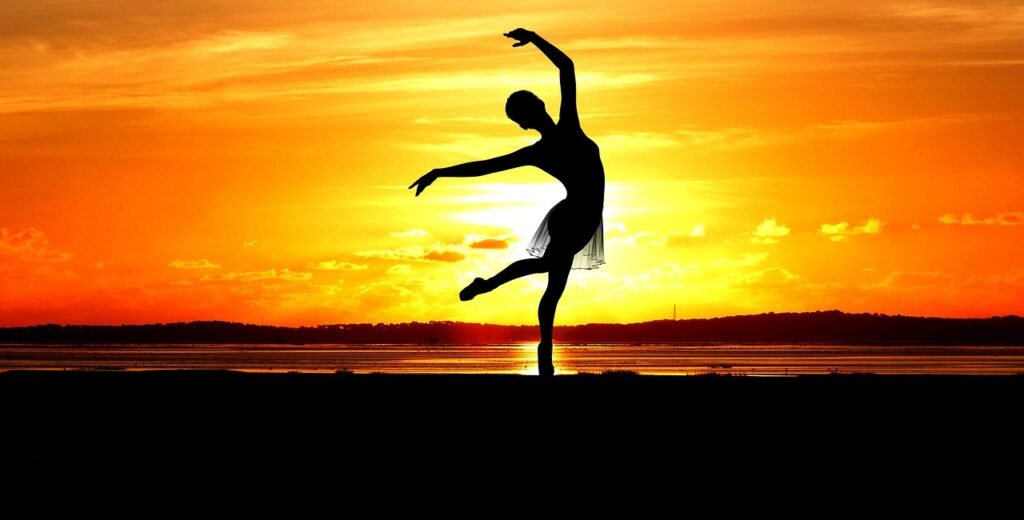
Table of Contents
What does Rond de Jambe mean?
The term “rond de jambe” originates from French, where “rond” translates to “round” or “circle,” and “jambe” means “leg.” Therefore, “rond de jambe” quite literally means “round of the leg.” This aptly describes the circular motion executed by the dancer’s leg during this movement.
Different Types of Rond de Jambe in Ballet
1. Rond de Jambe à Terre
Rond de Jambe à Terre, or “on the ground,” is the foundational form of this movement. It involves tracing a circular path with the working leg without lifting the toe off the ground.
2. Rond de Jambe en l’Air
Rond de Jambe en l’Air, or “in the air,” adds an extra challenge by lifting the working leg off the ground. This variation requires greater balance, control, and strength.
3. Rond de Jambe en Dehors and en Dedans
Also, we can classify the Ronde de Jambe by the direction of the circular motion: en dehors (clockwise) and en dedans (counterclockwise). Each direction offers unique challenges and benefits for the dancer.
4. Grand Rond de Jambe Jeté
It’s a large rond de jambe thrown, and it’s a term of the Russian School. This is an exercise for the hip joint performed at the bar. It’s usually preceded by a rond de jambe a terre which gives the necessary impetus for the vigorous forward thrust of the leg. Besides, you may do it consecutively as an exercise itself. Also, you can perform it en dedans or en dehors.
How to do the rond de jambe (Vaganova method)
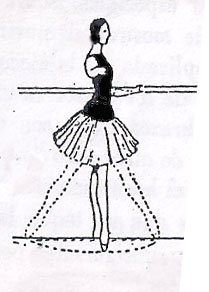
En dehors:
- The movement starts from the first position.
- Direct your leg forward, in the same way as in the battement tendu. From here, trace a curve with the tip of the foot, passing through the second position backwards until it is in front of the first position.
- From this point, the leg draws a straight line to the starting point of the curve. So, the leg passes through the first position with the heel low to the floor and the knees extended.
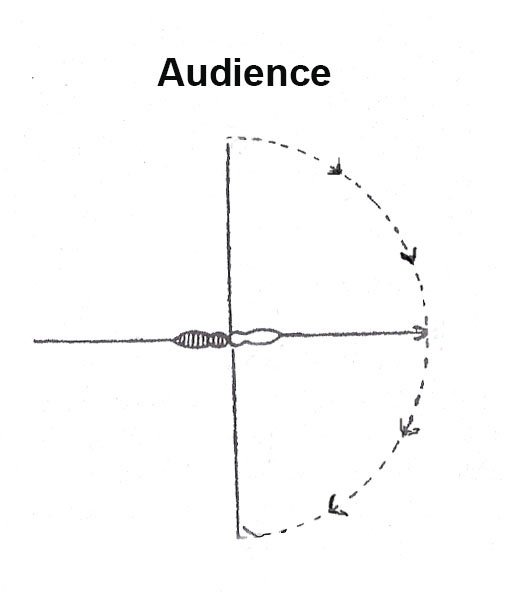
En dedans:
When you are doing the movement in the opposite direction, the leg moves backwards from the first position and traces the same curve and the same straight line in the opposite direction, following the same rules.
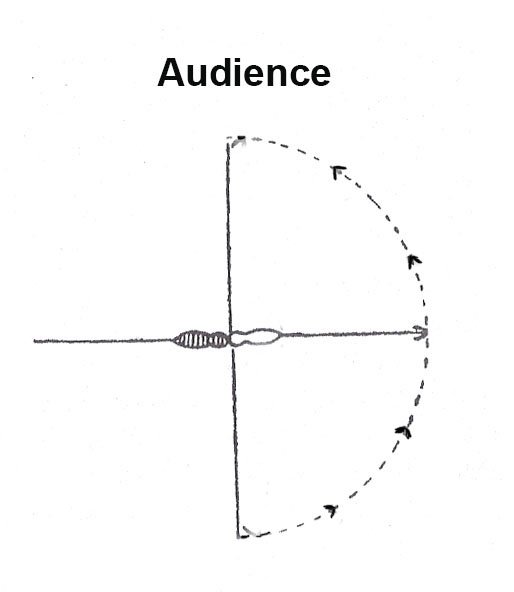
Once you finish the movement, put your leg in the fifth position forward, contrary to our general rule of ending the exercise in the fifth position backwards.
- If you are doing this movement fast en dehors, take care to reach the apex behind with your leg. While with the movement en dedans, the apex is ahead.
How to do rond de jambe a terre (Cechetti Method)
Preparation
With your left hand on the bar, stand erect, with your head upright and your right arm in the fifth position. Your feet are in the fifth position, with the right foot in front.
- Do demi-plie on both feet.
- Sweep your right foot to the fourth position front, pointe tendue.
- Gradually place your right arm in the fourth position en avant.
- Then, slide your right foot outwards along the ground to the second position, pointe tendue. Simultaneously, straighten your left knee gradually. Also, move your arm to the second position. Take care to open your arm gradually to the second position because the arm should follow the direction of the moving foot.
En dehors
After the preparation, start the rond de jambe a terre en dehors:
- Put your foot in pointe tendu.
- Slide your foot outwards along the ground so that it passes to the fourth position back, pointe tendu.
- Sweep your foot forward to the first position and continue moving it to the fourth position front, pointe tendue.
- Slide your foot outwards along the ground to the second position, pointe tendue.
So, you should trace a complete half-moon on the ground. You start the movement clockwise in the following order:
- From the first position to fourth position front pointe tendue.
- Then go to the second position pointe tendue to the fourth position back pointe tendue.
- Finally, end the movement returning to the first position.
The last time you do this movement, your foot continues moving from the first position to the fourth position front. So, your foot is ready to do the rond de jambe en dedans.
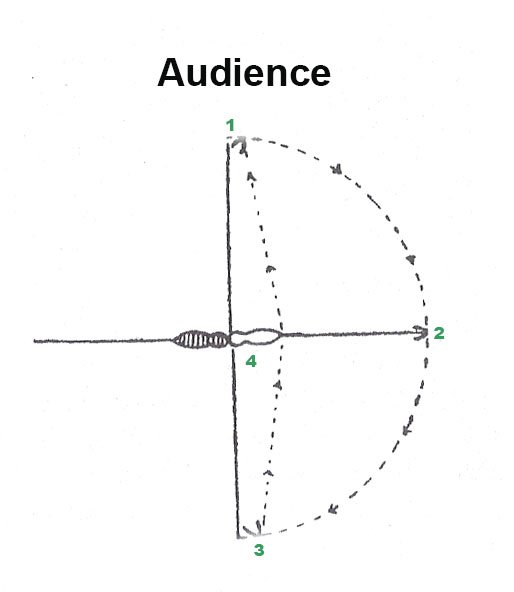
The dotted line from 4-1 shows the foot passing from the first position to the fourth position front.
The curve from 1-2 shows the foot passing from the fourth position front to the second position. The curve from 2-3 represents the foot passing from the second to the fourth position back.
Finally, the line from 3-4 represents the foot passing from the fourth position back to the first position.
En dedans
This movement begins at the same position as at the end of the rond de jambe a terre en dehors.
So, do the same movement as for rond de jambe en dehors, but counterclockwise. The last time you do this movement, finish in the fifth position front and place your right arm in the fifth position.
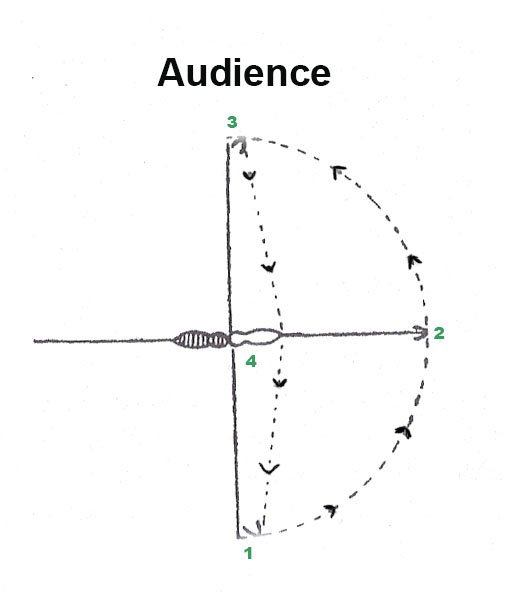
The dotted line from 4-1 shows the foot passing from the first position to the fourth position back.
The curve from 1-2 shows the foot passing from the fourth position back to the second position. The curve from 2-3 represents the foot passing from the second to the fourth position front.
Finally, the line from 3-4 represents the foot passing from the fourth position front to the first position.
Tips to do rond de jambe a terre perfectly
- When performing the rond de jambe par terre continuously, the foot must pass correctly from the tendu derrière position to tendu devant or vice versa through the first leg position. In this route, the foot presses against the floor, with the arch supported and maintaining dehors rotation from the hip.
- In a series of rond de jambe á terre, the strong accent occurs as the foot passes through the first position.
- Maintain your pelvis girdle completely still and controlled.
- The toe of the working foot does not rise off the ground and does not pass beyond the fourth position front or the fourth position back.
- This is an exercise to turn the legs out from the hips, to loosen the hips and to keep the toe well back and heel forward.
KEY INFO
- Both legs must be kept perfectly straight and all movement must come from the hip, along with the arching and relaxing of the instep.
- Even though the gesturing leg is doing the main part of the work, you’ve got to keep the supporting side, especially the abductors, turning out.
How to do a rond de jambe on l’air (Vaganova method)
You can do rond de jambe on l’air at the bar and in centre practice and may be single or double, en dehors or en dedans. The accent of the movement comes when the foot is in the second position en l’air.
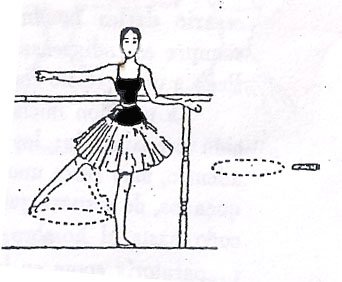
En dehors
From the fifth position, open the right leg towards the second at 45 degrees, with the toes extended. Then, your toe traces an ellipse clockwise.
In other words, bend your right knee, sweeping the pointe of the right foot towards and behind the left leg. So, the pointe touches the rear of the left calf. Then, bring the pointe just in the front of the left leg. Next, slide the pointe sideways and away from the left leg. So, straighten your knee gradually so that the foot is again extended in the second position en l’air.
Finish with your foot in the second position, en l’air.
KEY INFO
The joint between the hip and pelvis remains immobile. In this way, the upper part of the leg, from the knee up, also remains motionless.
En dedans
The leg begins to trace the ellipse counterclockwise. And to finish the movement, it goes down to the fifth position front.
Rond de Jambe en l’air double
This is a double rond de jambe performed either sauté or relevé. It consists of two quick circles of the leg. The leg is extended in full after the second circle at 45 or 90 degrees.
Tips to do rond de jambe en l’air perfectly
- When the rond de jambe en l’air has been well studied and is performed faster, the position and fixation of the leg must be carefully observed each time the second position is passed.
- This is a very important movement for the education of the body. You must execute it with complete accuracy. Don’t allow your leg to shake at the knee joint, because if this happens, the leg will not benefit from this training.
- This well-executed movement strengthens the upper leg. In addition, it helps the lower part (from the knee towards the heel) to behave obediently in all rotating movements, such as the fouette en tournant. In the latter case, this quality is very important, since a false movement of the leg could make the dancer fall. On the other hand, a well-developed (at the bottom of the knee), obedient, flexible leg adds expression to each movement of the dance.
KEY INFO
Take care that the raised foot always traces an ellipse. Don´t swing your leg in a straight line.
Grand rond de jambe jeté (Russian School)
This exercise is done on the bar. It is a preparatory movement. More advanced dancers can begin their lessons with this movement, which causes the whole body to immediately begin vigorous work. Beginner dancers should perform other preparatory exercises before executing this movement since the tension on the tendons and muscles of the hip is very great.
En dehors
Generally, the rond de jambe par terre is previously executed. This gives momentum to the leg when it is thrown with force in the grand rond de jambe jeté.
- From the fourth back position, with the toes extended, the leg is strongly thrown forward.
- Going through the first position, it rises forward in a semi-bent position at 45 degrees.
- Then the leg stretches, describes a backward arc at a height of 90 degrees and returns to the fourth position. The arc should be as large as possible, covering the entire field of action within reach of the leg.
KEY INFO
You must try to make the leg work absolutely independently, without moving the torso. You will achieve this once your muscles have strengthened and are subordinate to your will.
En dedans
The movement is executed in the opposite direction. You must take care that your leg, when moving from the fourth position forward to the first position, falls behind in a semi-bent position, strongly supported at the top. This gives strength and width to the circle.



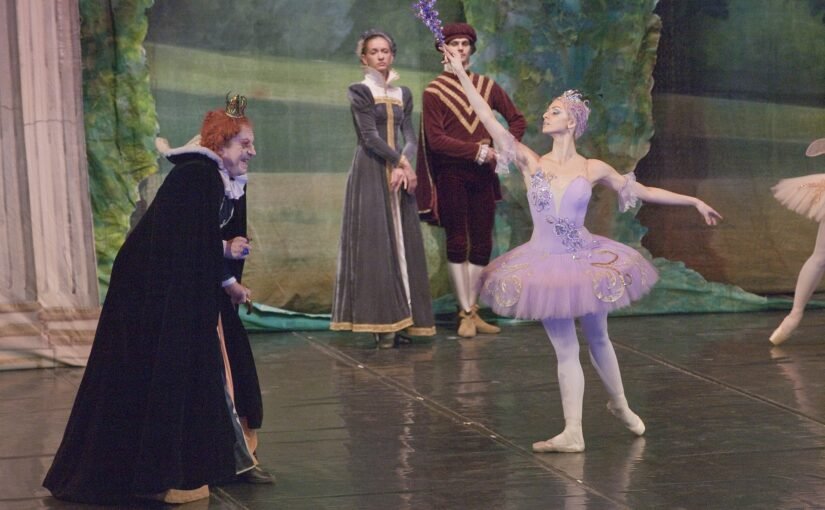

Leave a Reply